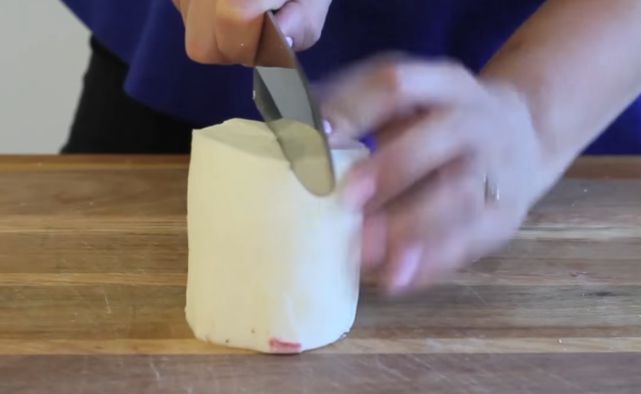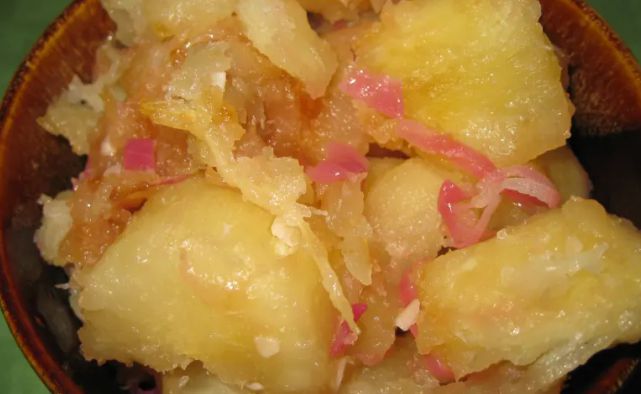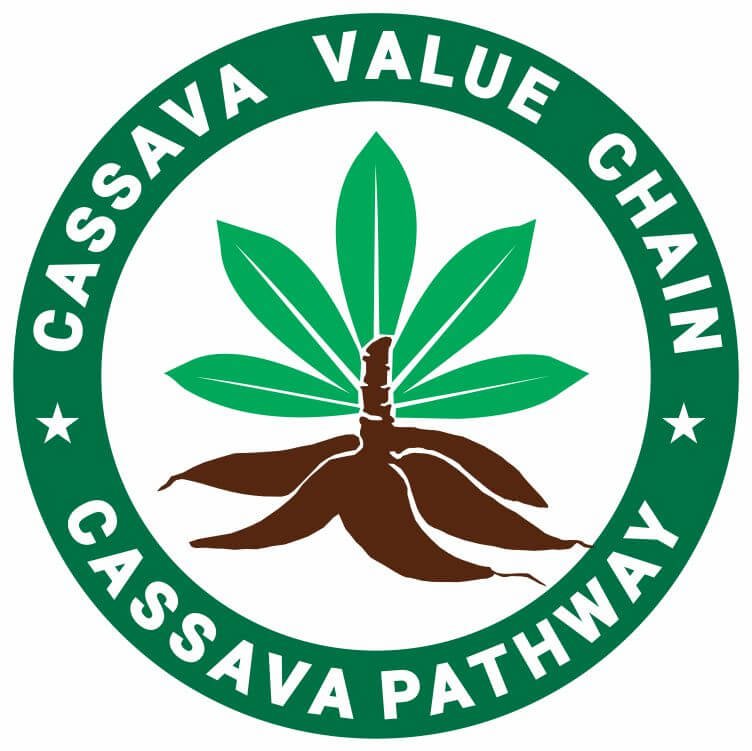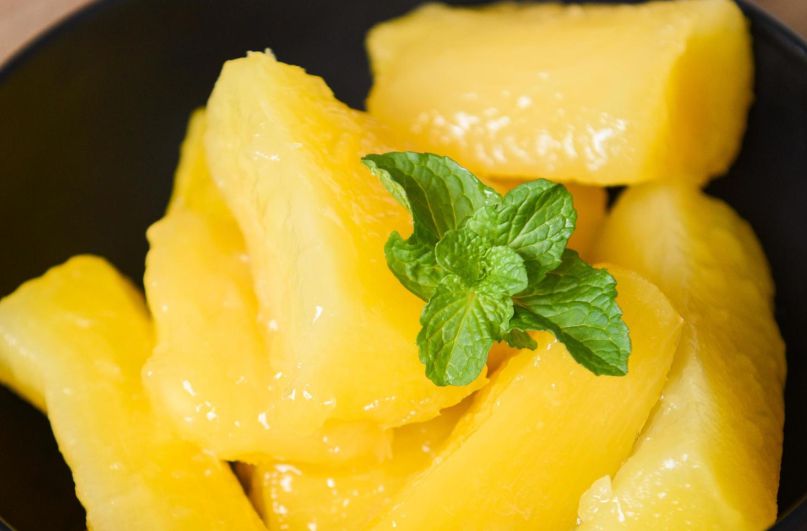Boiled cassava root, also known as yuca or manioc, is a simple and satisfying dish that showcases the natural flavor and versatility of this starchy tuber.
As something I grew up eating, I am emotionally attached to it and excited to write about it.
In my community, boiling cassava for eating is not popular, unless it is used for abacha, but someone in my family decided to explore beyond what was obtainable, and boom, boiled cassava root became a thing because it is delicious.
Whether served as a side dish, snack, or the foundation for more elaborate recipes, boiled cassava is beloved in cuisines around the world.
This recipe focuses on achieving perfectly tender cassava chunks with a creamy texture and mild flavor.
With just a few basic ingredients and straightforward steps, you can transform this humble root into a delicious addition to any meal.
Let’s quickly get into the foolproof method for boiling cassava to perfection every time! If you are new to cassava and its wonders, start here.
Recommended: Recipe for Yuca Fries (Fried cassava root)
Table of Contents
- Benefits of Boiled Cassava
- Ingredients and Tools Required
- How to Prepare Cassava/Yuca/ Roots for Boiling
- Boiling Instructions for Yuca Root
- Serving Suggestions
- Common Variations of Boiled Yuca Root Across Regions
- Health Benefits of Boiled Cassava Root
- Caution: Boiled Cassava’s Glycemic Index
- Storage and Reheating Tips
- Creative Ways to Use Leftovers
- Conclusion
Benefits of Boiled Cassava
Boiling is one of the traditional methods of processing cassava to make it safe for consumption or processed into other by-products.
Boiled cassava root offers a range of health benefits, including making it safer for diabetics.
Boiling cassava roots also makes it a nutritious addition to any diet.
It is an excellent source of complex carbohydrates, providing a steady energy boost.
Naturally gluten-free, it is a great option for those with gluten intolerance or celiac disease.
Rich in fiber, boiled cassava supports digestive health by promoting regular bowel movements and preventing constipation.
Boiled yuca roots also contain important minerals like calcium and magnesium, which contribute to strong bones.
The presence of vitamin C boosts the immune system, supports skin health, and aids in iron absorption.
Additionally, potassium in cassava helps regulate blood pressure, supporting heart health.
While its high glycemic index requires mindful consumption, pairing it with proteins or fiber can help balance blood sugar.
With its antioxidant content, cassava helps combat free radical damage, contributing to overall health and wellness.
Related: Cassava Root Recipes for Weight Loss
Ingredients and Tools Required
When preparing boiled cassava, yuca or manioc root, it is essential to gather all the necessary ingredients and tools beforehand.
This preparation step ensures a smooth cooking process and enhances the overall experience.
The primary ingredient:
- Fresh cassava root can be found at local grocery stores or specialized markets. Selecting firm, unblemished roots is crucial, as any signs of spoilage may negatively affect the dish’s flavor and texture.
- Salt is commonly used to season the water during the boiling process, as it helps to enhance the natural sweetness of the cassava.
- For those looking to add richness, a bit of butter can also be stirred in after boiling.
- Spices such as garlic powder or paprika can introduce additional flavor, depending on personal preferences.
Related: Many Ways to Prepare Cassava Root
Tools
- Knife: A sharp knife is vital for cutting the cassava root, while a peeler will come in handy for removing the tough outer skin.
- Pot: A pot or saucepan is necessary for boiling the cassava, as it should be large enough to accommodate the roots without overcrowding.
- Colander: A Colander will be useful for draining any excess water after the cassava has been boiled, ensuring the texture remains consistent and enjoyable.
Related: Recipe for Tapioca Sticks
How to Prepare Cassava/Yuca/ Roots for Boiling
Preparing cassava for boiling requires careful steps to ensure optimal cooking results.
Using a sharp knife, cut off both ends of the root. Next, you need to peel the tough brown skin.
Peeling
Insert the knife under the skin at one end and carefully work the blade down the length of the root.
The skin can be quite thick, so take your time to avoid cutting into the flesh. Once you have removed the skin, you will notice the white starchy interior.

Chop to Desired Sizes
After peeling, it’s essential to chop the cassava into even-sized pieces, typically about 2 to 4 inches long.
This uniformity is crucial as it ensures that each piece cooks at the same rate, resulting in consistent texture and doneness.
As you chop, take care to remove any woody or fibrous core that might be present in the center, as these parts are not suitable for consumption.

Rinse
Once your cassava chunks are ready, rinse them thoroughly under cold running water.
This step will help eliminate any remaining dirt or residue from the peeling process.
After rinsing, your prepared cassava, yuca, or tapioca is now ready for the next stage of cooking.
Following these preparation steps diligently will pave the way to achieving a deliciously boiled dish.
Related: How to Make Tapioca Pudding
Boiling Instructions for Yuca Root
- To boil your cassava roots, fill a large pot with enough water to cover the cassava pieces completely.
- Place the pot on the stove and turn the heat to high, bringing the water to a vigorous boil.
- For additional flavor, consider adding a pinch of salt to the boiling water. This is optional, but it can improve the overall taste of the finished dish.
- Once the water reaches a full boil, carefully add the cassava pieces to the pot.
- Allow the cassava to cook for a duration of 15 to 30 minutes, depending on the thickness of your pieces.
The cassava is ready when it becomes fork-tender, indicating that it has absorbed enough moisture and cooked through.
During the final few minutes of cooking, you may choose to add flavoring agents such as crushed garlic, bay leaves, or fresh herbs.
These additions can impart a richer taste to the cassava.
Drain the cassava in a Colander
Once cooked to perfection, carefully drain the cassava in a colander. Allow it to sit for a minute to ensure any excess water is removed.
The boiled cassava can then be served as is or mashed, offering a delightful side dish or a base for various toppings.
Recommended: Recipe for Tapioca Boba Pearls
Serving Suggestions

Boiled cassava roots can be enjoyed in numerous ways. Its mild flavor and unique texture make it an excellent complement to a variety of dishes.
One popular method is to serve it as a delightful side dish, accompanied by different of dipping sauces.
Also Read: Cassava Root vs Potato
1. Garlic Aioli and Butter Herb Toppings

- Enhance the natural flavor of boiled cassava with a flavorful garlic aioli or spicy mayo for a creamy, tangy twist.
- Dress it up with melted butter and fresh herbs like parsley or cilantro for a fragrant and rich topping.
- Experiment with herbs like dill or basil to create unique profiles that make cassava stand out.
2. Boiled Cassava in Stews
- Add boiled cassava to stews or casseroles for extra texture and heartiness.
- Let it absorb savory broths and spices to serve as a satisfying base.
- Try it in a Brazilian-inspired chicken stew for a comforting, flavorful meal.
Related: How to Make Cassava Root Boba
3. Boiled Cassava Root with Red Oil Sauce

While this might sound weird to you, red oil sauce prepared with fresh red palm oil blended with garlic, ginger, fresh pepper and salt is a delight.
It gives the same refreshing taste when used for boiled yam or plantain.
After adding the spices and salt to the red oil, preheat to let the oil melt and become thin, then put your boiled cassava in it and leave to sit for five minutes, enough time to absorb the spiced oil and you are good to go.
4. Paired with Grilled Meats
- Serve boiled cassava as a side dish with grilled meats or roasted vegetables.
- Its mild flavor and starchy texture complement the smokiness of barbecue dishes.
- Pair it with marinated chicken, beef, or veggie skewers for a balanced, crowd-pleasing plate.
Related: Cassava Root in Caribbean Cuisine
Common Variations of Boiled Yuca Root Across Regions
Boiled cassava root takes on unique flavors across the globe, showcasing the culinary traditions and tastes of different regions.
Boiled Yuca Roots in the Caribbean
In the Caribbean, cassava is often boiled with coconut milk, creating a creamy, subtly sweet dish.
The richness of the coconut pairs beautifully with spices that vary by island, making it a comforting favorite in many Caribbean households.
Boiled Cassava in Latin America
In Latin America, boiled yuca root is frequently served with mojo sauce, a tangy, garlicky dressing made with garlic, sour orange juice, and olive oil.
This bold combination highlights yuca’s starchy texture and pairs wonderfully with grilled meats and vegetables, reflecting the region’s vibrant food culture.
Boiled Cassava in Southeast Asia
In Southeast Asia, cassava root is often boiled and enhanced with zesty chili and lime.
Aromatic additions like garlic, cilantro, and scallions bring a fresh and bold flavor, celebrating the region’s love for dynamic and refreshing dishes.
Related: Cassava Root in Southeast Asian Cuisine
Health Benefits of Boiled Cassava Root
Boiled yuca root is packed with recognition for its nutritional benefits.
- Natural Carbohydrates: Packed with natural carbohydrates, they provide a steady energy source, making them a great choice for staying energized throughout the day, especially for active individuals.
- Gluten-free: One standout feature of cassava is that it’s naturally gluten-free, making it an excellent alternative for those with gluten intolerance or celiac disease.
Recommended: Everything to Know about the Cassava Glycemic Index
Caution: Boiled Cassava’s Glycemic Index
The glycemic index (GI) measures how quickly a food raises blood sugar levels after consumption. Foods with a GI value are categorized as:
- Low GI: 55 or less
- Medium GI: 56-69
- High GI: 70 and above
Boiled cassava typically has a moderate to high glycemic index, ranging between 46 to 77, depending on factors such as:
- Preparation method: Boiling cassava generally lowers its GI compared to frying or baking due to water content, which slows carbohydrate absorption.
- Ripeness: Riper cassava roots have more sugar, increasing the GI.
- Serving style: Pairing cassava with proteins, fats, or fiber can reduce the overall glycemic response.
Why Does Cassava Root Have a Higher GI?
Cassava is rich in starch, primarily composed of carbohydrates that digest into glucose, raising blood sugar levels.
While it provides steady energy, its high carbohydrate content requires careful portion control for individuals managing blood sugar, such as those with diabetes.
How to Lower Its GI Impact
- Pair with proteins and fats: Adding grilled meat, avocado, or olive oil can slow digestion.
- Include high-fiber vegetables: Serve cassava with leafy greens or legumes to reduce blood sugar spikes.
- Monitor portion sizes: Avoid overeating to maintain balanced glucose levels.
However, while boiled yuca root is nutritious, it’s calorie-dense, so portion control is key.
Pairing it with lean proteins and vibrant vegetables creates a balanced meal that fuels the body while delivering essential nutrients.
Related: Side Effects of Cassava Roots
Storage and Reheating Tips
- Steaming: Steaming is an excellent way to reheat cassava while maintaining its moisture and texture. Place the pieces in a steamer basket over boiling water for 5 to 10 minutes until warmed through.
- Boiling: For a quick reheat, immerse cassava in boiling water for a few minutes. Be careful not to overcook, as it may become mushy.
- Microwaving: Microwaving is a fast and convenient option. Place cassava in a microwave-safe dish, add a splash of water, cover it, and heat for 2 to 3 minutes. Check frequently to avoid overcooking.
Creative Ways to Use Leftovers
- Cassava Fritters: Mash leftover boiled cassava, mix in herbs, spices, or cheese, and pan-fry until golden and crispy.
- Mashed Cassava Base: Use mashed cassava as a hearty addition to soups or stews, reducing waste and adding flavor to your dishes.
Conclusion
Boiled cassava root, or yuca, is a culinary gem that transforms into a and satisfying dish.
With simple preparation and a mild, starchy flavor, it pairs beautifully with different toppings, sauces, and seasonings.
Whether served as a side dish, a stew addition, or a base for creative recipes, boiled cassava reflects diverse regional flavors and culinary traditions.
Its nutritional benefits, including being gluten-free, make it an excellent choice for various diets.
Boiled cassava invites endless possibilities – happy cooking!
References:

Chimeremeze Emeh is a writer and researcher passionate about Africa’s most transformative root crop—cassava. Through his work at cassavavaluechain.com, he explores the entire cassava industry, from cultivation and processing to its diverse applications in food, health, and industrial use.
He also writes for palmoilpalm.com, where he shares his extensive experience and deep-rooted knowledge of palm oil, covering red palm oil, palm kernel oil, and refined products. His work there reflects his lifelong connection to agriculture and his commitment to promoting sustainable value chains in Africa.
Driven by curiosity and purpose, Chimeremeze aims to shed light on how cassava continues to empower communities, strengthen food systems, and link traditional farming wisdom with modern innovation.

